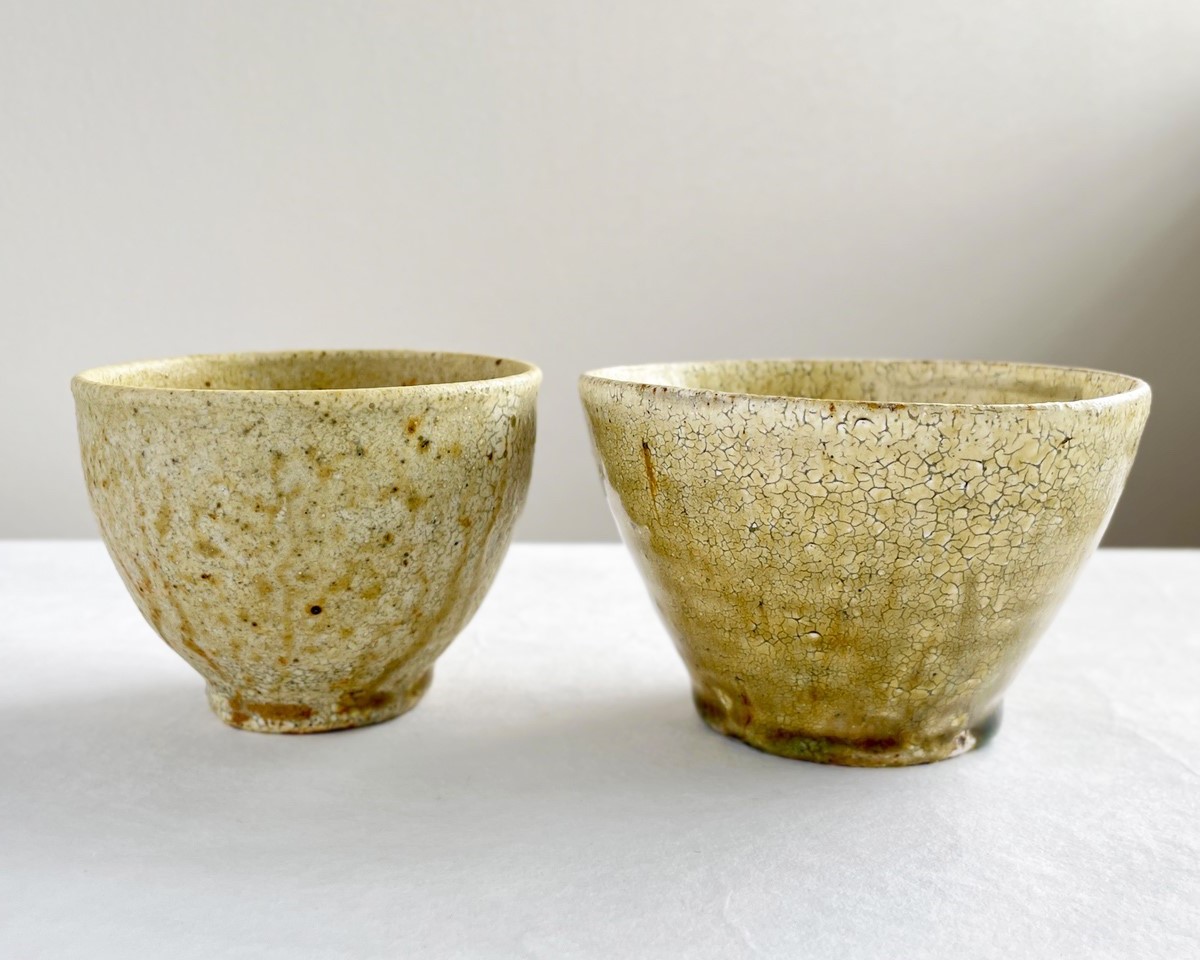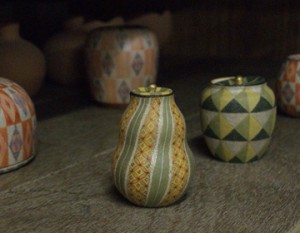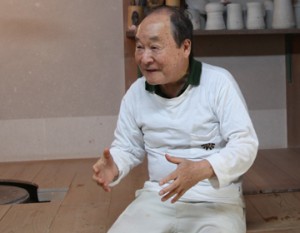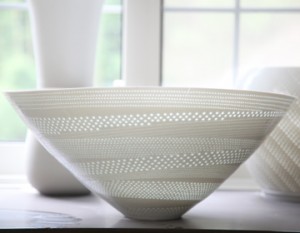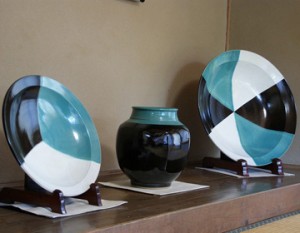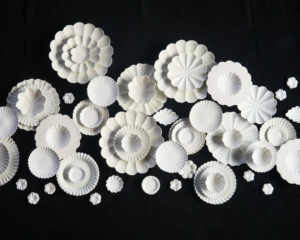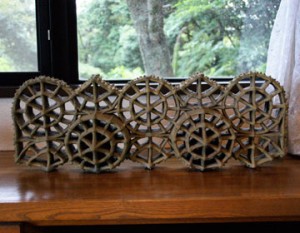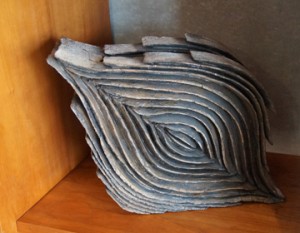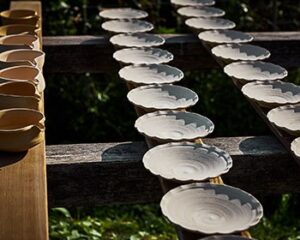Ceramic artist Miun Suzuki creates pottery at her studio in Yamagata City, Yamagata Prefecture. Her simple vessels, free of excessive decoration, are created from clay she collects herself and from her own “kick wheel,” which she spins by kicking. Suzuki, who was fascinated by the Yi Dynasty, creates pieces with a face that fits easily into daily life without any effort.
Young potter creating simple yet powerful vessels

Miun Suzuki is a ceramic artist who makes pottery in Yamagata City. Originally from Chiba, Japan, she has been familiar with the Tohoku region since she was a child, as her parents are from there. She moved to Yamagata Prefecture when she entered the Tohoku University of Art & Design. The house he now uses as his studio and home originally belonged to his grandparents. He began living there when he was a student and took over the house after graduation.
Mr. Suzuki’s works are stoically simple vessels, devoid of any excessive decoration. As a student, he was influenced by the simplicity and beauty of Yi Dynasty ceramics, which were thick, sturdy, and rustic, and were loved by the Japanese who respected wabi and sabi (simplicity and simplicity).
Atelier in a residential area
Mr. Suzuki’s atelier was surrounded by a strangely tranquil atmosphere despite its location in a residential area near a main road. Yamagata City is the prefectural capital. However, the moment I stepped into his studio and home, I felt as if I had wandered into a mysterious space isolated from my surroundings.
This was because Mr. Suzuki appeared barefoot. The reason for this, I would later learn, was that it was February at the time. It was snowing and the outside temperature was estimated to be around freezing, but the sight of him walking barefoot in such light weather left a deep impression on me. Mr. Suzuki’s studio is also equipped with a kiln. He uses a kerosene kiln, which is similar to a wood-fired kiln. He chose the kerosene kiln because a wood-fired kiln can be fired in the traditional way, but it requires a lot of wood, as well as time and skill. The size of the kiln depends on the size of the piece, but it is large enough to fire about 30 pieces at a time. We set up the kiln with the permission of our neighbors because there are houses around us,” says Suzuki.
Unique handmade “kicking rokuro

Another eye-catching feature in Mr. Suzuki’s atelier is the “kicking wheel” installed in his workshop. In a sense, this is also Mr. Suzuki’s “work of art. The reason is that he made it himself. There are two types of wheels, manual and electric, and nowadays, the electric wheels are more widely used. In fact, at the Geidai Institute of Technology, where Mr. Suzuki attended, there were many motorized wheels, but only one hand wheel. While many students chose to use electric power, he chose the hand rokuro after receiving advice from an instructor who said, “If you like Yi Chao vessels, you should use the hand rokuro. Furthermore, while still in school, Mr. Suzuki received a log and made the “kick rokuro,” which he now uses in his workshop. As the name suggests, he spins the wheel by kicking it with his feet and forms the vessel with his hands. Not only that, but the hands and feet must be moved separately, and according to Mr. Suzuki, “it doesn’t turn very well. If he has to kick the potter’s wheel with his bare feet even in the coldest season and the rotation of the wheel is not good, one might think that it would be more efficient to replace the wheel with one that moves more smoothly, but he says, “The current hand wheel has air in it, so its movement is not so different from that of an electric wheel, and I can make pottery smoothly. However, “The current hand potter’s wheel has air in it. However, what I am longing for is the beauty of simplicity and imperfection of the old pottery. To express these qualities, I chose a kick wheel because it is primitive and does not turn very fast.
The Road of Ceramic Art as Determined by the Rokuro and the Yi Dynasty

It was the “rokuro” (potter’s wheel) and the “Yi Dynasty” that drew Mr. Suzuki into the world of ceramics, and were at a crucial stage in determining his later style.
His first encounter with ceramics was when he was a high school student at an art school. He was exposed to the potter’s wheel, and his desire to spin the wheel and continue to do so grew, leading him to enter the Crafts Course at Tohoku University of Art & Design, where he could study ceramics. While still in school, something happened that determined his current style. While studying past works, he was fascinated by Kawakita Handeishi’s kohiki, which led him to “Yi Dynasty” ceramics. Kawakita Hanadeko was a ceramic artist active from the Meiji period to the Showa period. He is also known as “Rosanjin of the East and Hanroko of the West,” and is known for his free expression that utilizes cracks and distortions in the kiln while maintaining a traditional base. Another influence on Suzuki’s style is the “Yi Dynasty. When the term “Yi Dynasty” is used to refer to vessels, it refers to ceramics made by the Yi Dynasty, a dynasty that existed on the Korean Peninsula from the late 14th to the late 20th century. The distortions that characterized Yi dynasty ceramics and their sturdy simplicity, which was the opposite of thin and elegantly finished ceramics, became the beauty of imperfection and captured the hearts of Japanese connoisseurs who loved wabi and sabi (quiet and quiet). Mr. Suzuki was fascinated by the characteristics of Yi Dynasty ceramics and their simple and rustic style without excessive decoration. He describes Yi Dynasty ceramics as “not too beautiful in a good sense.
Influenced by these styles, Mr. Suzuki’s style is quite simple. The simple combination of feldspar and ashes, and the flow and pooling of the glaze, give the piece a certain expression. The absence of excessive decoration conversely leaves a lasting impression that naturally makes you want to keep the piece close at hand.
Mr. Suzuki, who creates such one-of-a-kind vessels, is conscious of something that he has been doing recently.
Aiming to create products that can only be made in Yamagata

In recent years, Mr. Suzuki has been trying to “create products that can only be made in Yamagata. He wants to make the best use of local raw materials to create vessels that can only be made in this region.
Take clay, for example. Although he generally purchases soil from Gifu Prefecture, he sometimes uses soil from a nearby mountain, which he found on a walk in his neighborhood. The local soil is sandy and not suitable for pottery, but by mixing it with clean soil, he is able to give the finished vessels a more rustic feel. He also uses local materials for the ashes he uses to mix glazes. It is the ash of fruit trees. The glaze is made using ashes mixed with various fruits and fruit trees from Yamagata, which is said to be a fruit kingdom. Because he does not make his pottery at a kiln or in a kiln area, Mr. Suzuki hopes to incorporate elements unique to the area where he lives. That is because he “loves this land. A snowy country where it is so cold that the potter’s clay freezes is not the best place to make vessels. However, Mr. Suzuki loves the clean air and nature of Yamagata, and he says that being able to use his grandparents’ house as his studio to make pottery in this environment is a great advantage for him. Another reason, he says, is his fear that Yamagata pottery is a bit out of date these days, and he would like to make use of the characteristics and elements of the land where he now lives in his own pottery making.
Our goal is to create “vessels” that fit easily into daily life and are easy to use.

I would like to make vessels that have a wide range of uses,” says Suzuki, “vessels for daily use but that can also be used as tea utensils. This is similar to the image of Yi Dynasty ceramics, which were used as miscellaneous vessels in the local market, but were used as tea utensils after coming to Japan. Indeed, the vessels that Mr. Suzuki makes seem to transcend their original categories and can be used flexibly according to the user’s lifestyle, as in the case of a small bowl that can also be used as a small sake cup.
Another goal is “usability,” which comes from the weight and size. However, he says that in the past, he sometimes did not place much emphasis on ease of use. There was a time when he did not think much about size and shape, and thought that the heavier the vessel, the better. However, when he was advised that “in order for people to pick up a piece of pottery, you have to consider its usability,” he put “usability of the pottery” in the corner of his mind and started spinning the potter’s wheel. However, he still wanders about what kind of vessels he wants to make.
Beauty born of inadequacy
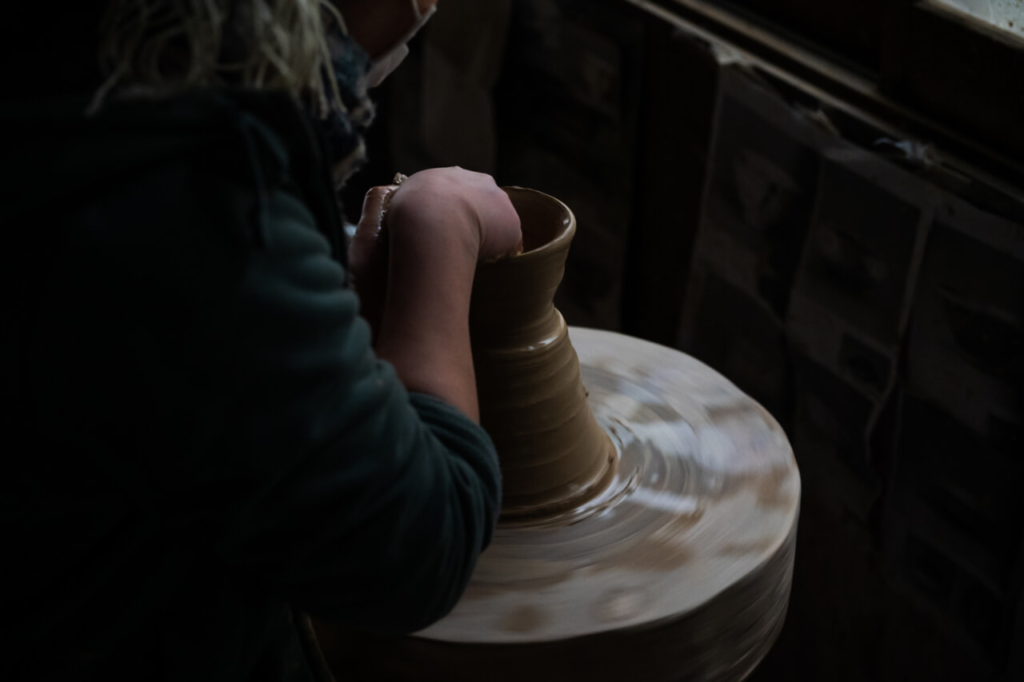
Mr. Suzuki describes his vessels by saying, “The vessels I make are the result of inadequate conditions. It is the result of “something missing,” such as the local clay, which is fragile and not suitable for ceramics, and a potter’s wheel that does not turn smoothly. However, it does not mean that he wants a convenient environment for pottery making. The vessels that are created from a situation where something is missing have a blank space or an impression of being left out. Mr. Suzuki values this “blank space.
When it comes to ceramics, difficult topics such as “wabi-sabi” and “traditional crafts” tend to follow, but Mr. Suzuki says that he does not think much about classifications or categories for his works. In his own words, “I am making ‘Utsuwa’ (vessels). He is not a traditional craftsman, nor is he completely devoted to the style of ceramics used in daily life, but is still hovering between the two. This attitude of “not categorizing his work” also seems to reveal the blank space that is one of the charms of Mr. Suzuki’s vessels.
Suzuki’s “vessels” are created in an imperfect environment, with a primitive, slow-turning wheel and clay that is not suitable for ceramics. The simplicity of his “vessels” has a mysterious charm that makes you want to keep one on hand, without any difficulty. Once you pick one up, it will fit comfortably into your daily life.



